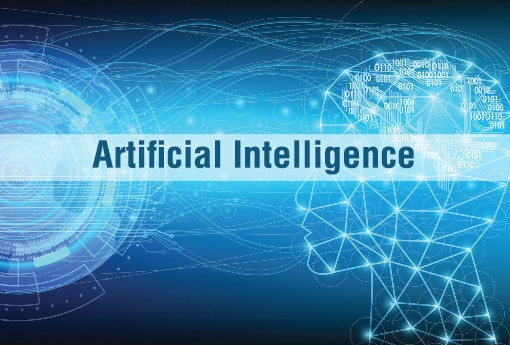Technology
Expert advises companies to use AI for more intelligent operations

According to Casmir Charles, an expert in Artificial Intelligence and Data Science-Driven Change & Release Management headquartered in the United Kingdom, maintaining competitiveness in today’s quickly expanding digital world demands effective information technology change and release management.
“Embracing AI for Smarter IT Change and Release Management: Boosting Efficiency and Minimising Risks” was the title of a statement that The Punch was able to obtain on Sunday. According to Charles, “incorporating AI into these procedures makes it possible to enhance productivity, lower risks, and guarantee smooth deployments.”
According to the AI specialist, the predictive, automated, and efficient nature of AI is being used to transform IT Change and Release Management.
He explained how IT Change and Release Management was changing in terms of its use of AI prediction models, which was an essential component of contemporary IT.
He said, “To ensure that changes to IT services and digital products are carefully managed to prevent interruptions, Change and Release Management are crucial components of IT and Digital Services. These procedures have historically depended on careful design, manual oversight, and stringent testing.
“However, the limitations of manual processes have been made clear by the increasing complexity of IT environments, increasing the likelihood of mistakes and inefficiencies.
“AI facilitates the change from reactive to proactive management, hence introducing a paradigm shift. Change and release management can be considerably improved by using AI-driven solutions to improve decision-making, automate repetitive operations, and promote continuous development.”
According to Charles, predictive analytics is where AI has the biggest impact on change management, adding that Artificial Intelligence could forecast the possible outcomes of suggested change and evaluate their chances of success or failure by examining historical data on previous changes, such as success rates and failure patterns.
“To predict how a new software update would impact the current infrastructure or digital product, for example, AI can analyse data from earlier software changes. Because of this, there is a lower chance of service interruptions since IT workers can proactively resolve possible problems before they arise. Furthermore, AI can ensure minimal business effect by recommending the best times to deploy changes based on historical performance data and resource availability.
“AI improves risk mitigation by automating the process of assessing risk. In contrast to subjective and inconsistent traditional assessments, artificial intelligence employs objective algorithms to thoroughly assess risk factors. It can evaluate how a change might affect other parts of the IT and Digital ecosystem and identify changes that pose a high risk and should be reviewed more thoroughly.”
Addressing ‘Automating Release Management for AI Model Deployment,’ the expert explained that AI in release management is all about automation and optimisation, which makes releases faster and more dependable.
He said AI-driven solutions could handle every step of the release process, eliminating the need for manual involvement from code integration and testing to deployment and monitoring.
“The deployment pipeline’s automation with AI is a significant innovation. When AI meets predetermined standards, including passing automated testing or hitting performance targets, it can initiate deployments automatically. This quickens the release cycle, enabling companies to roll out digitals and new features more regularly,” he said.
According to him, the implementation of AI prediction models is a new facet of release management that is becoming more and more important as companies use AI solutions.
“Machine Learning Operations, as they are commonly called, are the specific tools and processes needed to manage the deployment of these models. To guarantee that AI models are deployed smoothly and function dependably in production situations, MLOps combines model creation, deployment, and monitoring into a unified framework.
“Similar to traditional software, AI models also need to be carefully tested, monitored, and versioned. By automating these procedures, MLOps solutions guarantee that models are regularly updated, function as intended, and do not deteriorate over time. Businesses may make sure that their AI projects are effective and generate the desired business value by integrating AI-driven automation into the predictive model deployment process.
“Additionally, real-time insights into the performance of recently launched software and AI models are provided by AI-powered monitoring tools, which can identify anomalies or performance problems right away. This facilitates prompt reactions and reduces disturbance to end-users, hence leading to more dependable and effective releases,” he explained.
On enhancing collaboration and decision-making, Charles said, “Artificial Intelligence improves decision-making and collaboration in Change and Release Management, going beyond automation and risk control. Releases and changes most times necessitate collaboration between several teams in intricate IT settings. AI-driven collaboration solutions help to keep everyone involved informed, improve workflows, and facilitate communication.
“Chatbots and virtual assistants that are driven by AI, for instance, can respond to team members’ questions, offer real-time information on the status of releases and revisions, and recommend future actions based on the state of development. With the use of these tools, communication gaps between teams may be closed and information needed for well-informed decision-making is ensured for everyone.
“By providing data-driven insights, AI also aids in decision-making. AI could make recommendations in change management based on anticipated outcomes and assess the possible effects of various change options. Informed and objective decision-making is aided by this, lowering the possibility of costly errors for IT and Digital leaders.”
He stressed that an important development in the way businesses manage and implement IT and Digital services was the use of AI in IT Change and Release Management.
“Businesses may lower risks, increase efficiency, and boost the performance of their change and release processes by utilising AI’s predictive, automated, and collaborative capabilities. AI will play a bigger part in IT Change and Release Management as it develops, spurring more innovation and changing how IT services are delivered in the digital era.
“To handle the deployment of AI models, organisations must also begin considering how their IT Change and Release Management procedures will change over time. The successful deployment and management of AI models will be made possible by technologies such as MLOps, which will open the door to more adaptable, resilient, and flexible IT operations.
“Accepting these changes is essential to maintaining competitiveness in a more dynamic and complicated digital market, as well as to improve IT operations,” the statement concluded.

-

 Technology2 years ago
Technology2 years agoVoIP Number: Everything You Need To Know
-

 Music2 months ago
Music2 months ago[Music] Gnash Ft Olivia O’Brien – I Hate you, I Love you
-

 Music1 month ago
Music1 month ago[INSTRUMENTAL] John Legend – All Of Me
-

 Music2 months ago
Music2 months agoAlan Walker – Faded [INSTRUMENTAL]
-

 Music1 month ago
Music1 month ago[Video] 21 Savage ft. Offset & Metro Boomin – Rap Saved Me
-

 Music2 months ago
Music2 months ago[Instrumental] Wiz Khalifa – See You Again ft. Charlie Puth
-

 ANE Stories4 months ago
ANE Stories4 months ago[STORY] AMAKA THE LESBIAN (Complete Episodes)
-

 Music2 months ago
Music2 months ago[Music] Akon – Sorry Blame It On Me












































